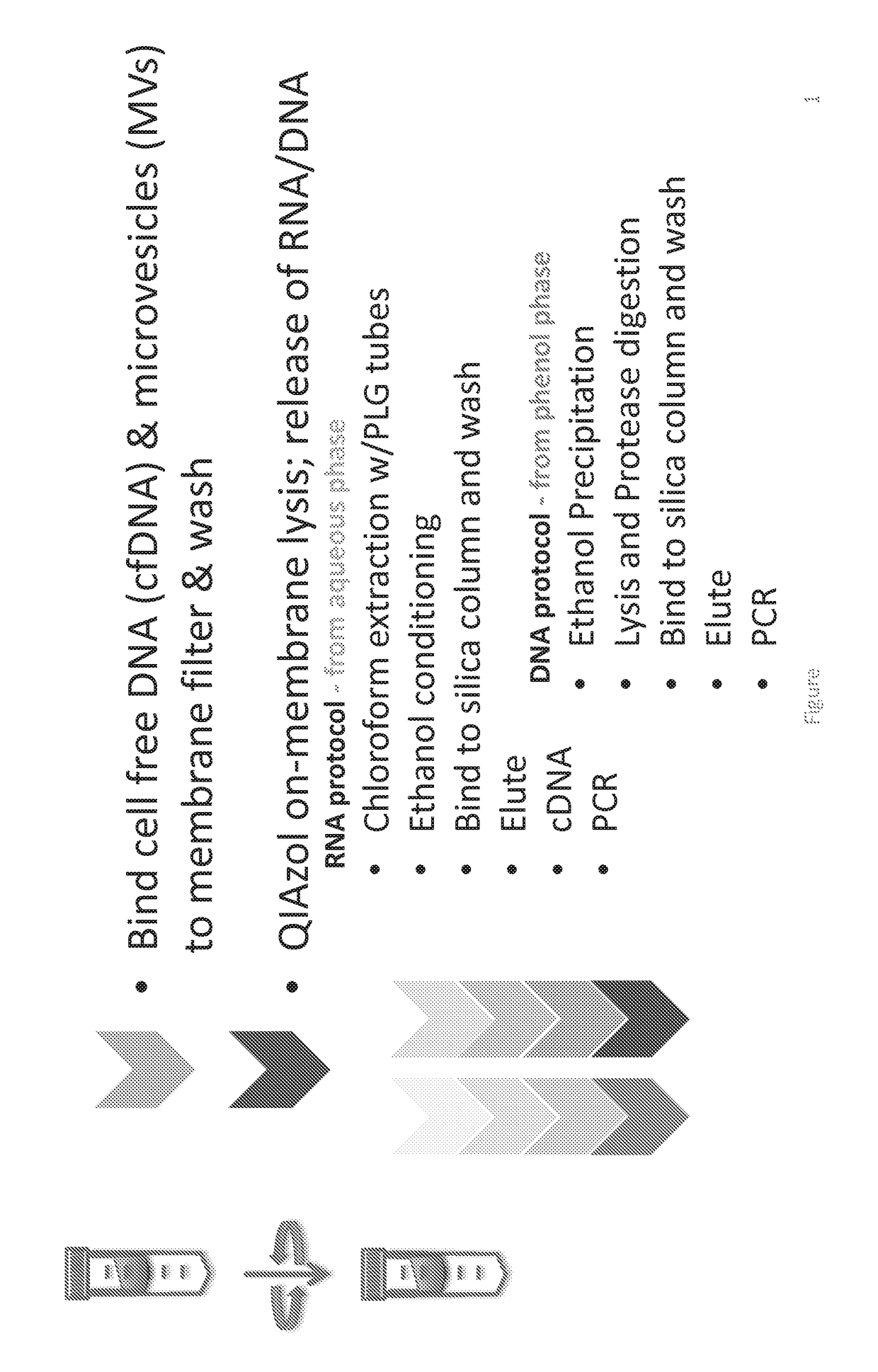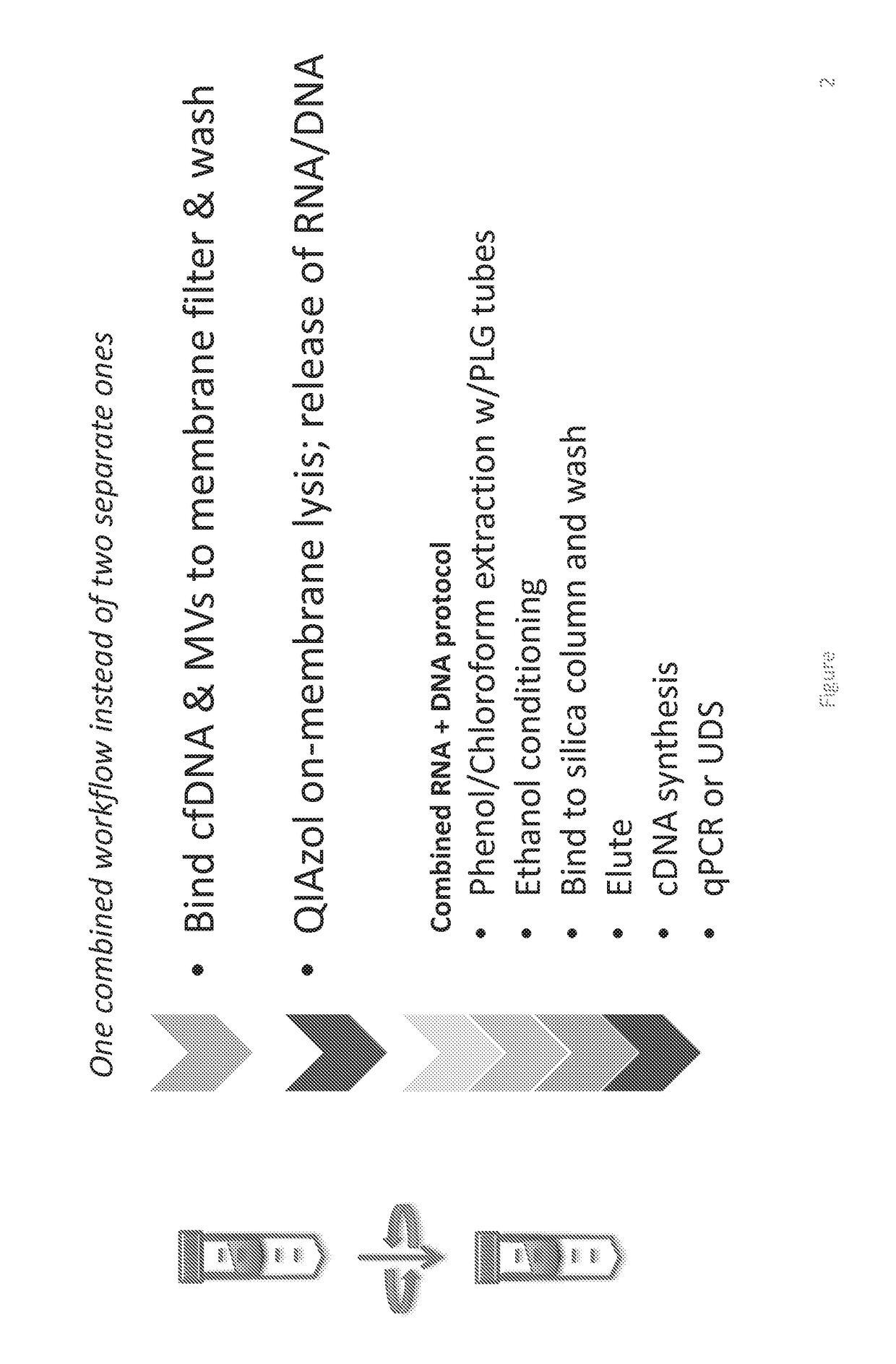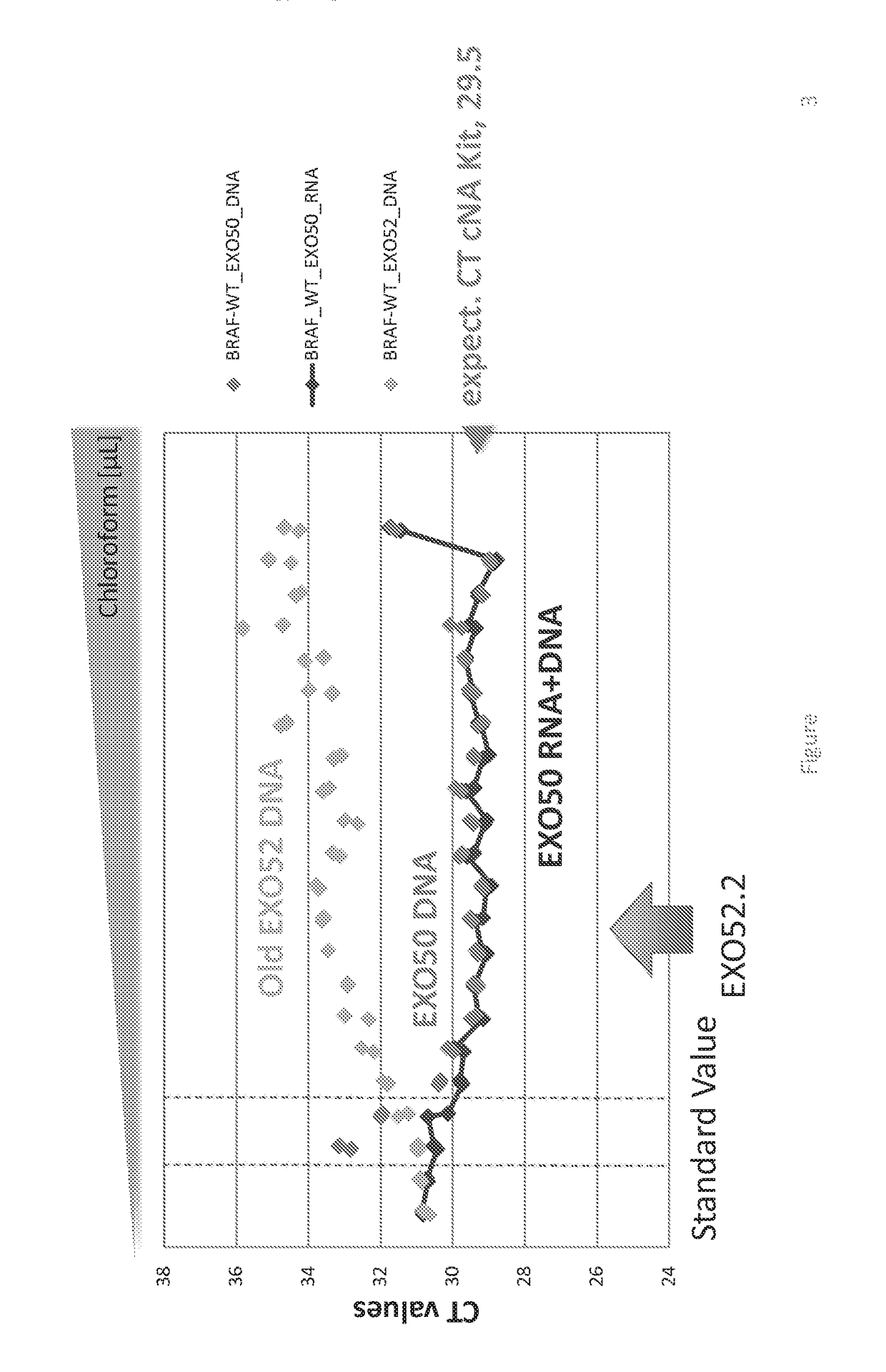Methods for isolating microvesicles and extracting nucleic acids from biological samples
- Summary
- Abstract
- Description
- Claims
- Application Information
AI Technical Summary
Benefits of technology
Problems solved by technology
Method used
Image
Examples
example 1
[0189]EXO52 Isolation of DNA, as well as Co-isolation of RNA and DNA
[0190]This example demonstrates the ability of the EXO52 method to isolate all DNA from a plasma sample. It should be noted that in some of the Figures presented herein, various terminology has been used to identify precursor methods to the isolation methods referred to herein as EXO52. For example, some Figures include terms such as old EXO52, EXO52.1, and variations thereof. These earlier versions are provided solely as a comparison and to demonstrate the superior isolation achieved using the EXO52 methods of the disclosure. The use of the term EXO52.2 is the EXO52 method where the RNA and DNA extraction is performed in a single tube.
[0191]The EXO52 column can also be used to isolate all DNA from a plasma sample. Two methods for utilizing the EXO52 column for DNA isolation in addition to RNA are depicted in FIG. 1 and FIG. 2. Specifically, the difference between the two processes is that the RNA and DNA extraction...
example 2
[0231]Development of a one-step isolation platform for exosomal RNA and cell-free DNA from cancer plasma
[0232]Circulating nucleic acids in the bloodstream of cancer patients are of great interest to medical research because of their potential to yield information on the patient's disease status and treatment options without requiring a tissue biopsy. Any diagnostic test that seeks to utilize Biofluids for mutation analysis needs a platform that can maximize the capture of tumor derived mutations in circulation. Blood plasma contains at least two cell-free sources of nucleic acids: circulating cell-free DNA (cfDNA), generated from apoptotic or necrotic cells, and RNA enclosed in extracellular vesicles including exosomes (exoRNA), which are actively secreted by cells in the body. Since the total amount of nucleic acids in Biofluids is very limited and tumor mutations are reflected on both RNA and DNA, a method was devised to co-isolate all exoRNA and cfDNA out of blood plasma samples ...
PUM
| Property | Measurement | Unit |
|---|---|---|
| Length | aaaaa | aaaaa |
| Pore size | aaaaa | aaaaa |
| Pore size | aaaaa | aaaaa |
Abstract
Description
Claims
Application Information
 Login to View More
Login to View More - R&D
- Intellectual Property
- Life Sciences
- Materials
- Tech Scout
- Unparalleled Data Quality
- Higher Quality Content
- 60% Fewer Hallucinations
Browse by: Latest US Patents, China's latest patents, Technical Efficacy Thesaurus, Application Domain, Technology Topic, Popular Technical Reports.
© 2025 PatSnap. All rights reserved.Legal|Privacy policy|Modern Slavery Act Transparency Statement|Sitemap|About US| Contact US: help@patsnap.com



